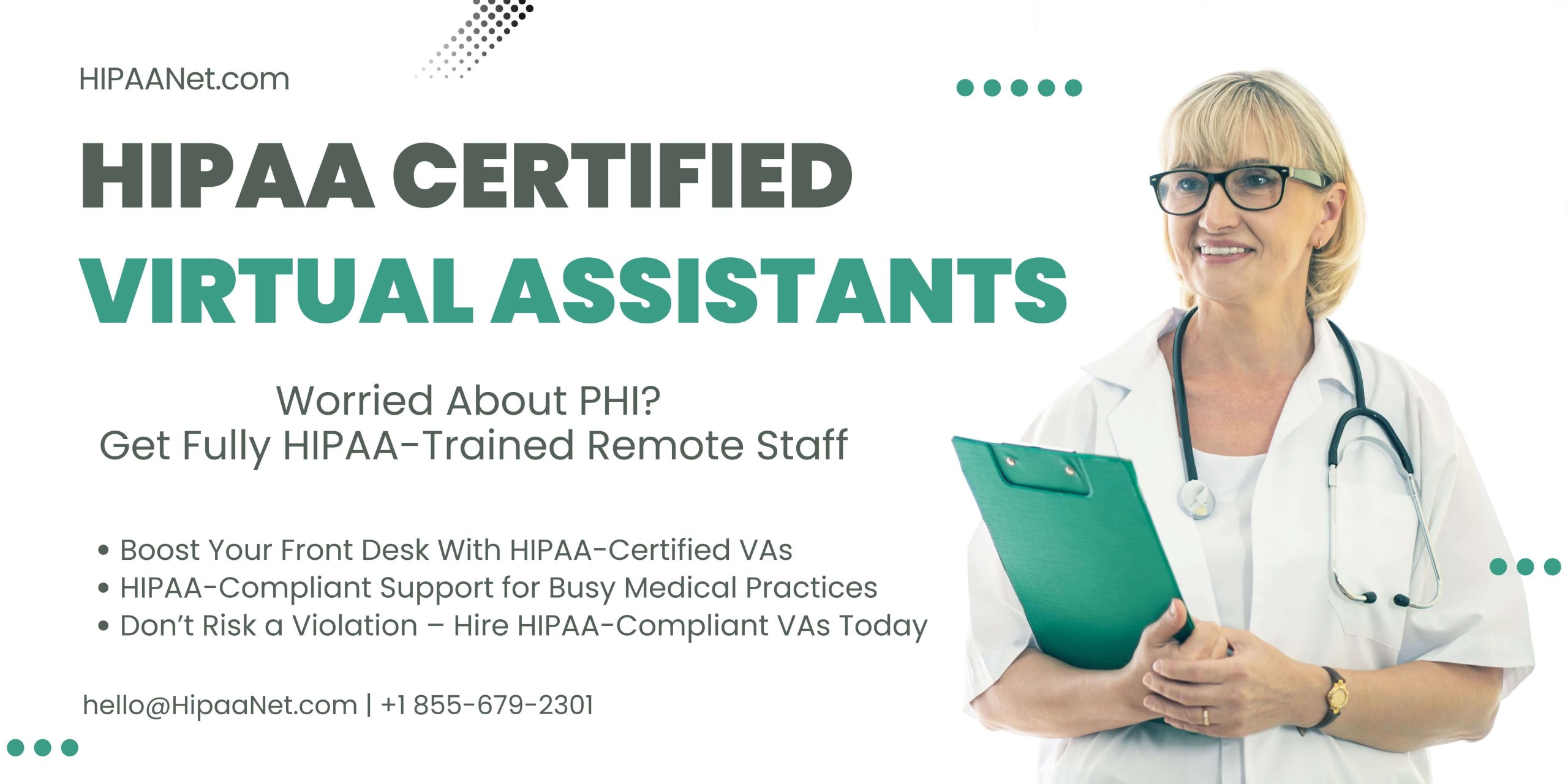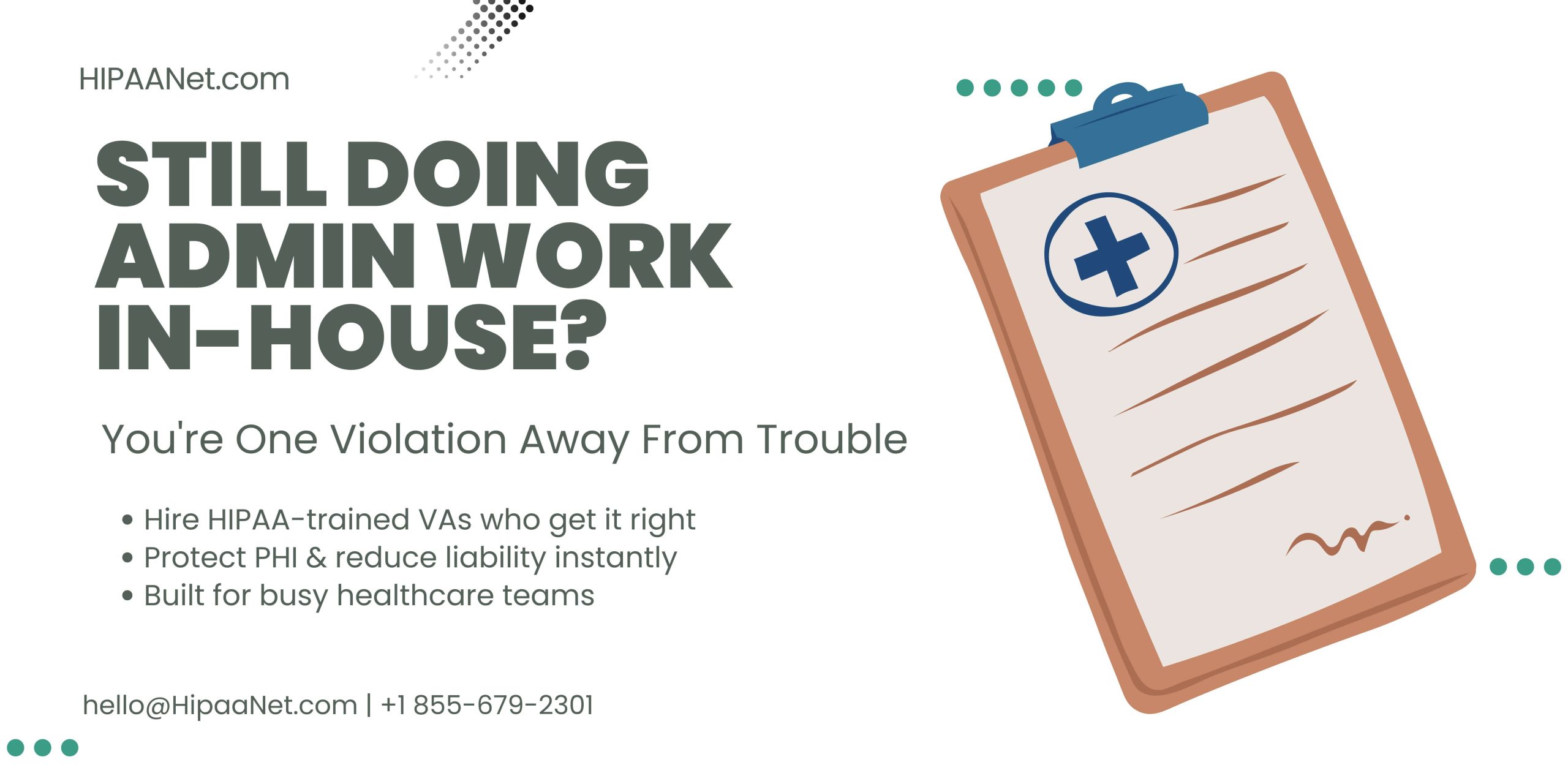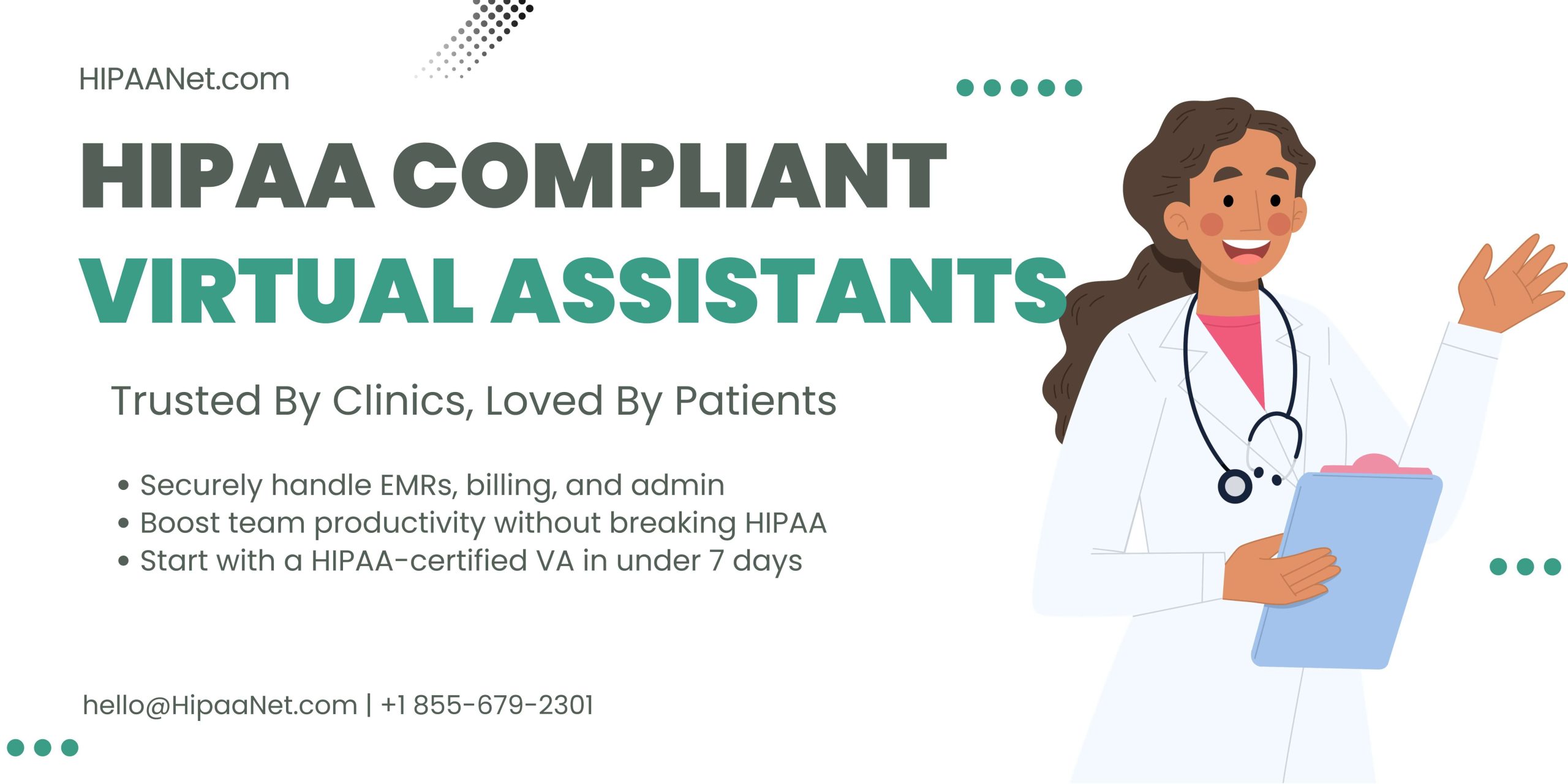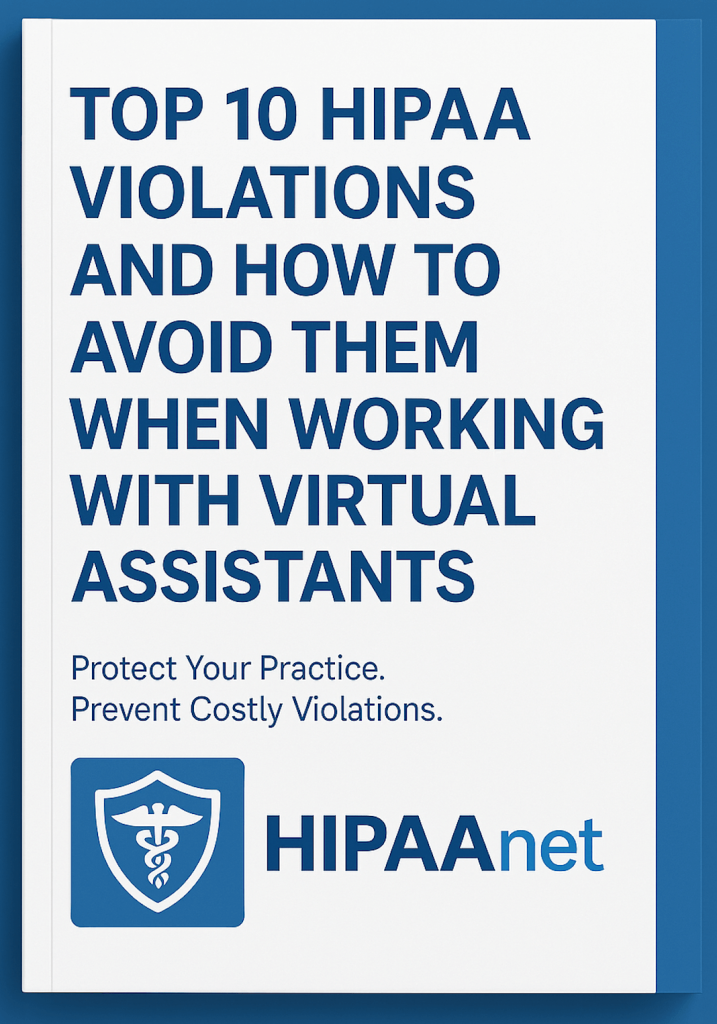Navigating HIPAA compliance can feel overwhelming. With the healthcare industry facing a staggering 50% increase in data breaches over the past year, the stakes are high. Failing to adhere to HIPAA regulations not only risks hefty fines but also jeopardizes patient trust and your organization’s reputation.
You need a reliable roadmap to ensure your practice stays compliant and secure. A well-structured HIPAA best practices checklist can help you identify potential vulnerabilities, streamline your processes, and safeguard sensitive patient information. By implementing these best practices, you can significantly reduce the risk of breaches and enhance your organization’s credibility.
At HIPAANet, we offer tailored solutions that simplify compliance and protect your practice. Don’t leave your security to chance—partner with us to ensure your HIPAA compliance is not just met but exceeded.
Understanding HIPAA Compliance
HIPAA, or the Health Insurance Portability and Accountability Act, sets the standards for protecting sensitive patient information in the healthcare sector. Understanding HIPAA compliance involves understanding its rules and ensuring that healthcare providers, insurers, and their partners comply with these regulations.
What Is HIPAA?
HIPAA is a federal law that safeguards your personal health information. It applies to healthcare providers, insurers, and clearinghouses that handle your medical data. Under HIPAA, your information must remain confidential, and you have rights regarding how it’s shared. For instance, you can ask to see your health records and request corrections if needed.
HIPAA comprises several rules, including the Privacy Rule, which protects individual medical records and other personal health information, and the Security Rule, which focuses on electronic protected health information (ePHI). Compliance with these rules ensures that your sensitive information remains secure.
Importance of HIPAA Compliance
HIPAA compliance is crucial for various reasons. First, it protects patient privacy. When healthcare organizations adhere to HIPAA, they limit unauthorized access to sensitive information, fostering trust between patients and providers. Furthermore, non-compliance can lead to hefty fines of up to $1.5 million per year. Organizations risk losing their reputation and patients if they fail to uphold these standards.
Moreover, with cyberattacks on the rise, organizations that neglect HIPAA compliance invite data breaches that compromise patient information. Investing in compliant practices safeguards data, ensuring that both patients and organizations avoid the harsh consequences of breaches. To effectively manage compliance, consider HIPAANet services. HIPAANet offers tailored solutions for healthcare providers, ensuring compliance with HIPAA regulations and helping you avoid potential fines.
Outsourcing to HIPAANet provides expertise in navigating the complexities of HIPAA compliance. Trained professionals understand the intricacies of HIPAA regulations and can implement effective policies for data protection. By partnering with HIPAANet, you gain access to tools and resources that streamline compliance efforts, allowing your organization to focus on providing quality care without the burden of administrative tasks.
For more information on HIPAA compliance and its importance, you can check out these resources: HIPAA Basics for Providers and HIPAA Enforcement Overview.
Key Components of the HIPAA Best Practices Checklist
The HIPAA Best Practices Checklist helps you protect patient information and ensure compliance with regulations. Following the checklist reduces the risk of data breaches, fosters trust with patients, and keeps your healthcare practice running smoothly.
You face challenges like cybersecurity threats and strict regulations. Not following HIPAA can lead to hefty fines and loss of patient trust. Seeking expert help is key to overcoming these challenges, and HIPAANet provides excellent solutions for your HIPAA needs.
Why You Need Administrative Best Practices
Administrative safeguards ensure that employee actions protect patient data. Key practices include:
- Training Employees: Regular training creates awareness about HIPAA policies and their importance.
- Designating a Privacy Officer: Assign someone responsible for managing your HIPAA compliance efforts.
- Conducting Risk Assessments: Regularly assess potential vulnerabilities in your processes to mitigate risks.
Neglecting this area can expose you to heavy penalties and data breaches. For assistance, consider outsourcing to HIPAANet, where experts know how to befficiently olster your administrative safeguards.
Understanding Physical Safeguards
Physical safeguards protect your facility and equipment from unauthorized access. These can include:
- Access Controls: Use locks and access cards to control entry to sensitive areas.
- Workstation Security: Ensure computers and equipment are secured when not in use.
- Secure Disposal of Records: Safely destroy documents containing patient information to prevent unauthorized access.
If you overlook physical safeguards, unauthorized individuals may access sensitive data. HIPAANet offers guidance and services to enhance these security measures.
Implementing Technical Safeguards
Technical safeguards focus on the technology used to store and transmit patient data. Essential measures include:
- Encryption: Protect electronic records with encryption to secure patient data during transmission.
- Access Controls: Set explicit user permissions and authentication for systems that store sensitive health information.
- Regular Software Updates: Keep systems updated to defend against threats and vulnerabilities.
Ignoring technical safeguards can lead to dangerous breaches of patient data. With HIPAANet, you can receive specialized support to fine-tune your technical practices.
For more information on HIPAA compliance, check out the U.S. Department of Health & Human Services HIPAA Basics and the American Health Information Management Association HIPAA Resources.
By addressing these components in your HIPAA Best Practices Checklist, you invest in the future of your healthcare practice. Prioritize patient privacy and compliance to build trust and avoid penalties. HIPAANet supports you in these efforts, providing expert services to ensure your organization is well-prepared.
Creating Your HIPAA Best Practices Checklist
Creating your HIPAA best practices checklist helps ensure compliance and safeguards patient information. This process involves thorough assessments and ongoing evaluations of your organization’s practices.
Assessing Your Current Compliance
Start by evaluating your current compliance status. Review existing policies and procedures to ensure they align with HIPAA requirements. Conduct an inventory of protected health information (PHI) handled by your organization, including documents, electronic records, and communication channels.
Identify all employees with access to PHI and assess their training on privacy policies. Monitor adherence to protocols and document areas requiring improvement. Regular audits can highlight compliance levels and help maintain proactive measures.
Identifying Gaps and Risks
Next, identify gaps and potential risks related to HIPAA compliance. Analyze your current safeguards—administrative, physical, and technical. Start with administrative safeguards. This includes evaluating employee training programs, privacy officer roles, and risk assessments. Move to physical safeguards by assessing building access controls, security measures for stored data, and disposal practices for sensitive information. Finally, review technical safeguards. Check the encryption methods used, the frequency of software updates, and data access logs.
Identify any vulnerabilities that might expose PHI and increase the risk of data breaches. Highlighting these risks emphasizes the importance of outsourcing compliance management to experts like HIPAANet. HIPAANet’s services can boost your organization’s compliance with tailored solutions ensuring all practices meet regulatory requirements. By partnering with HIPAANet, you enhance your compliance efforts, safeguard patient data, and focus on providing quality care.
Implementing the HIPAA Best Practices Checklist
Implementing the HIPAA Best Practices Checklist requires a structured approach, focusing on comprehensive staff training and ongoing audits. This ensures your organization meets compliance standards effectively.
Training and Education for Staff
Training your staff on HIPAA regulations is crucial for maintaining compliance. Start by conducting initial training sessions for all employees that cover HIPAA basics, emphasizing the importance of protecting patient information. Schedule regular refresher courses to reinforce knowledge, ensuring that everyone stays up to date on compliance standards.
Assign a dedicated privacy officer who oversees training programs and addresses any questions from staff. Incorporating real-life scenarios during training can aid understanding and retention. Create easily accessible resources, such as quick reference guides or online modules. This makes it simpler for your team to refresh their knowledge when needed. Ensure each new hire undergoes HIPAA training immediately upon joining.
Accountability strengthens your training efforts. Monitor staff adherence to HIPAA policies with regular assessments. Utilize quizzes or practical exams to gauge understanding and provide feedback for improvement. Engage employees by encouraging open discussions about compliance challenges, fostering a culture of vigilance and care for patient privacy.
Regular Audits and Updates
Conducting regular audits and updates to your policies and practices is vital in achieving ongoing HIPAA compliance. Schedule audits at least annually, focusing onassessingf administrative, physical, and technical safeguards. Auditing helps identify areas requiring improvement and ensures effective compliance with HIPAA regulations.
Incorporate a checklist during audits that encompasses all aspects of HIPAA compliance. Following audits, implement changes based on the identified gaps in your practices. Track the resolution of these gaps to ensure continual compliance and to protect patient data.
Stay abreast of changes in HIPAA regulations and technology. Update your policies and training programs as new information becomes available or when regulations change. Regular updates help maintain your organization’s compliance and safeguard against potential data breaches.
Using an experienced partner like HIPAANet for compliance management makes the process simpler. HIPAANet offers expertise in conducting audits and training, significantly easing your burden and ensuring your organization adheres to the necessary standards. Outsourcing compliance management can help you focus on providing quality patient care while confidently navigating HIPAA complexities.
By integrating ongoing staff training and regular audits into your organization’s practices, you significantly enhance your HIPAA compliance efforts. Utilize these strategies to support the protection of patient information and the integrity of your healthcare practice.
For further resources on HIPAA regulations, check out HIPAA Journal and U.S. Department of Health & Human Services HIPAA.
Conclusion
Staying compliant with HIPAA is essential for protecting patient information and maintaining trust in your practice. By following a structured HIPAA best practices checklist, you can identify vulnerabilities and strengthen your safeguards. Regular training and audits are key to ensuring ongoing compliance and adapting to new challenges.
Partnering with experts like HIPAANet can streamline your compliance efforts, allowing you to focus on what truly matters—providing quality care to your patients. Remember that a proactive approach to HIPAA compliance not only helps you avoid penalties but also enhances youorganization’s’s reputation in the healthcare community. Take the necessary steps today to secure your practice and youpatients’s’ sensitive information.
Frequently Asked Questions
What is HIPAA?
HIPAA, the Health Insurance Portability and Accountability Act, establishes standards for protecting sensitive patient information. It includes key provisions, such as the Privacy Rule and the Security Rule, designed to ensure the confidentiality and security of personal health information.
Why is HIPAA compliancsubstantialnt?
HIPAA compliance is crucial for safeguarding patient privacy, maintaining trust, and avoiding hefty fines or reputational damage. As data breaches become more common, following HIPAA regulations helps healthcare providers secure sensitive patient data effectively.
What is a HIPAA Best Practices Checklist?
A HIPAA Best Practices Checklist is a structured tool that helps healthcare organizations identify vulnerabilities and implement necessary safeguards. It includes administrative, physical, and technical safeguards designed to ensure compliance and protect patient information.
How can HIPAANet assist with compliance?
HIPAANet offers tailored solutions and expertise to help healthcare practices navigate the complexity of HIPAA. By outsourcing compliance management to HIPAANet, organizations can enhance their adherence to regulations while focusing on delivering quality care to patients.
What are administrative safeguards in HIPAA?
Administrative safeguards encompass policies and procedures designed to manage the selection, development, and performance of security measures that protect PHI. This includes employee training, appointing a privacy officer, and conducting risk assessments to identify vulnerabilities.
What are physical safeguards in HIPAA?
Physical safeguards include measures to protect physical access to facilities and equipment where protected health information (PHI) is stored. This involves implementing access controls, ensuring secure disposal of records, and protecting facilities from unauthorized access.
What are technical safeguards in HIPAA?
Technical safeguards address the technology and policies used to protect electronic protected health information (ePHI). This includes encryption, regular software updates, and monitoring access to ensure the confidentiality and security of sensitive data.
How should organizations assess their current HIPAA compliance status?
Organizations should conduct thorough reviews of existing policies, inventory their protected health information (PHI), and monitor employee training on privacy policies. Regular assessments identify gaps and risks related to HIPAA compliance.
What is the importance of staff training in HIPAA compliance?
Comprehensive staff training is essential for ensuring that employees understand HIPAA regulations and procedures. Regular initial and refresher training sessions enhance employee knowledge and help mitigate the risk of compliance violations.
How often should audits for HIPAA compliance be conducted?
Regular audits should be conducted periodically to assess all aspects of HIPAA compliance. This practice helps identify areas for improvement and ensures that policies and training programs remain up-to-date with current regulations.






